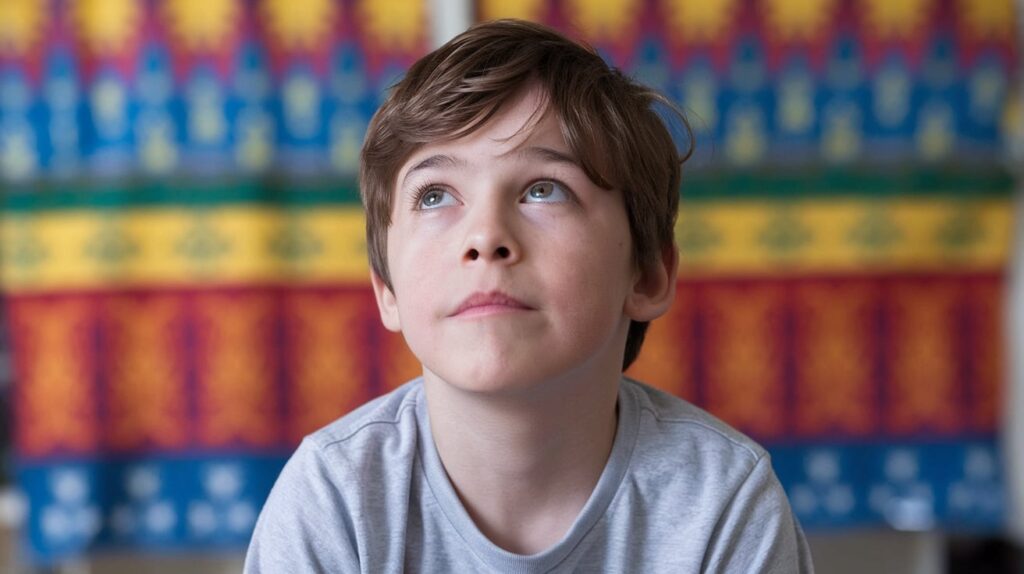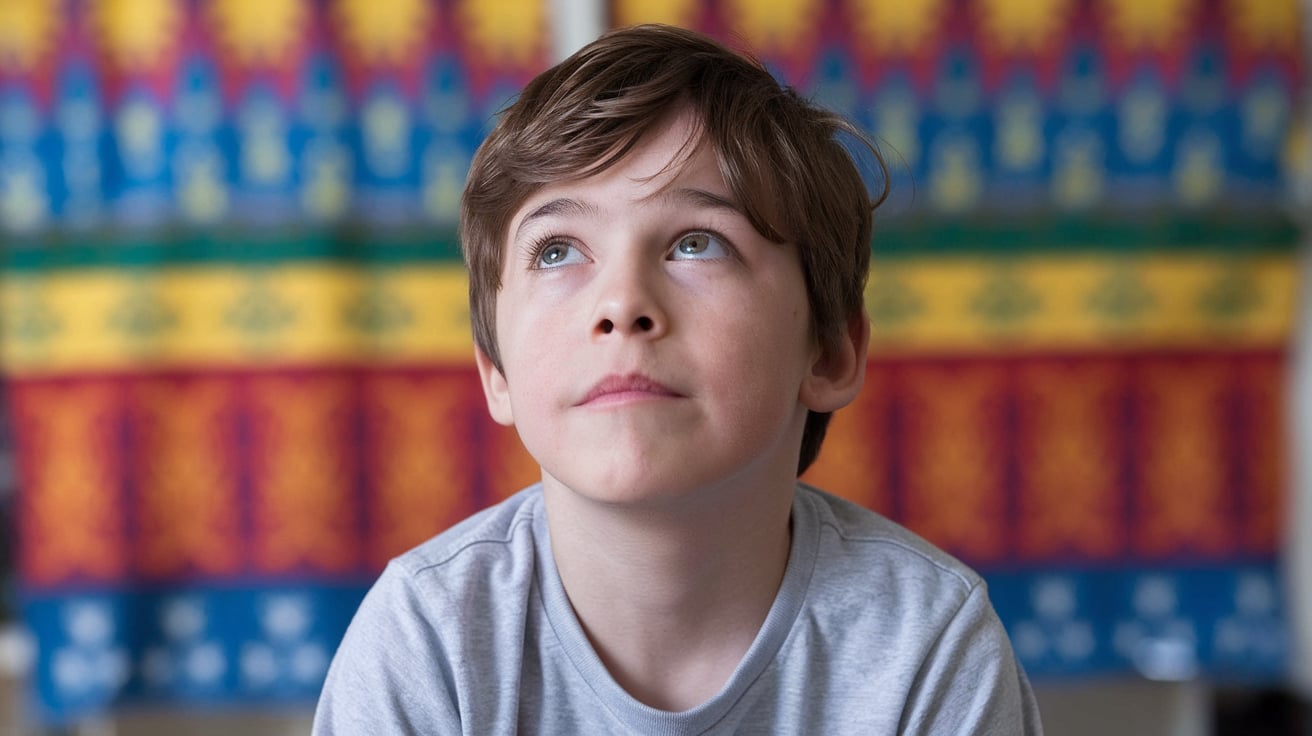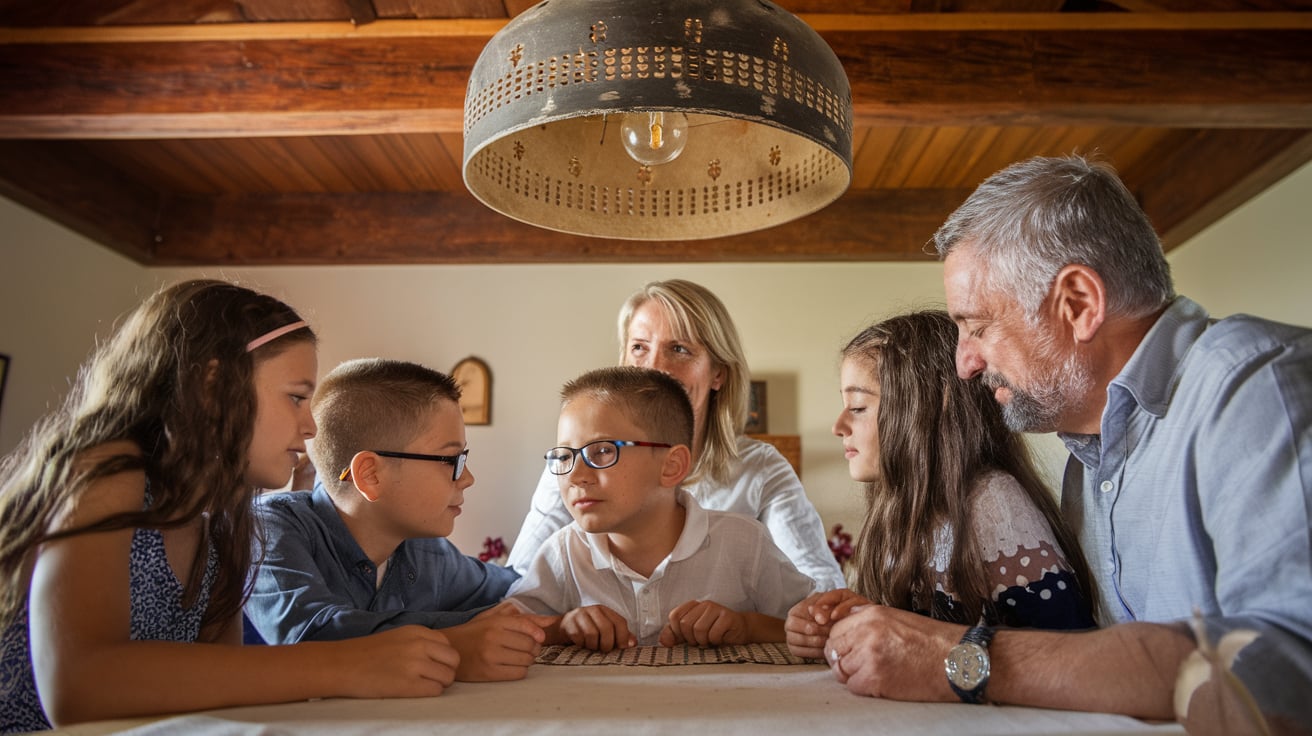When my child was diagnosed with autism spectrum disorder (ASD), it felt like yesterday. The emotions were all over the place – from shock to a strong will to support my child. Autism is a tough road, but it’s also full of happiness, growth, and connection.
This guide is my way of sharing what I’ve learned. I hope it helps other parents on the autism journey.

Key Takeaways
- Autism is a lifelong neurodevelopmental condition that affects how a child communicates, interacts, and behaves.
- Children with autism may have difficulty with social skills, exhibit repetitive behaviours, and experience sensory sensitivities.
- Autism diagnosis often happens in preschool or school-aged years, though early signs can appear in toddlers.
- Autism is more commonly diagnosed in boys, but girls with autism can often be overlooked.
- As a parent, you play a crucial role in supporting your child’s development and advocating for their needs.
What Is Autism Spectrum Disorder?
Autism spectrum disorder (ASD) is a lifelong difference in how a child develops. It affects their communication, social skills, and behaviour. Children with ASD often have intense interests and unique ways of learning.
Criteria for Autism Spectrum Disorder
To be diagnosed with ASD, a child must show signs in two key areas:
- They might struggle with communication and social skills. This includes not responding to their name, not wanting to share, and not making eye contact. They also find it hard to understand others’ emotions.
- They may have restricted or repetitive behaviours, interests, or activities.
Signs of a Deficit in Communication and Social Skills
Children with ASD often find it hard to communicate. They might not start or keep conversations, understand body language, or notice social cues.
Sensory Problems and Verbal Ability
Some kids with ASD have sensory issues. They might be too sensitive or not sensitive enough to sounds, textures, or smells. Their ability to speak can vary, from not speaking at all to speaking a lot but finding it hard to have two-way conversations.
Terminology: “Autistic,” “With Autism” and “Asperger’s”
In the autism community, people have different views on how to talk about autism. Some say “Autistic” to show autism is a big part of who they are. Others use “person with autism” to highlight the person’s humanity first.
The debate shows how society sees and understands autism. Some think “person with autism” helps change negative views. Others see “Autistic person” as a way to celebrate autism.
The term “Asperger’s disorder” is no longer used since 2013. Yet, many still call Autistic people without language or intellectual issues “high-functioning.”
| Terminology | Perspective |
|---|---|
| “Autistic person” | Identity-first language, viewing autism as an integral part of one’s identity |
| “Person with autism” | Person-first language, emphasizing the individual’s humanity beyond the diagnosis |
| “Asperger’s” | Outdated term, previously used to describe Autistic individuals without language or intellectual impairment |
Choosing the right words to describe autism is complex. It shows the varied views in the autism community. It’s important to respect these differences to create a more welcoming society for everyone on the autism spectrum.
“The debate on person-first language is argued as crucial for changing societal attitudes toward Autistic individuals.”
How Is Autism Diagnosed?
Diagnosing autism spectrum disorder (ASD) is complex because it affects each child differently. Early detection is key for the right support and help. In Australia, kids get autism screening at 18 and 24 months. This is when they check for milestones like smiling and babbling.
First Steps: Screening Tools
If the first screening shows signs of autism, doctors might use tools like the Cognoa ASD Diagnosis Aid. This software checks for developmental issues in kids from 18 months to 5 years. They might also suggest genetic tests to rule out other conditions.
Comprehensive Evaluation
A detailed autism evaluation involves a team of experts. They include psychologists, paediatricians, and speech pathologists. They look at language, thinking, and social skills, as well as any repetitive behaviors.
The team uses tools like the Autism Diagnostic Observation Schedule (ADOS-2) and the Autism Diagnostic Interview-Revised (ADI-R). The diagnosis follows the DSM-5 criteria. It looks at communication, social skills, and repetitive behaviors.
Children with autism may be classified into three levels. This depends on their needs. Early intervention is vital for improving language, social, and thinking skills. With the right help, many with ASD can lead happy and fulfilling lives.
TO WATCH VIDEO CLICK HERE
“Autism diagnosis typically occurs between 12 and 18 months, with the actual diagnosis usually happening around 2 years of age.”
Why Autism Diagnoses Are Often Delayed
Early help is key for kids with autism, but getting a diagnosis can take time. Some kids might first be told they have speech issues or ADHD. It’s often not until school starts that they’re diagnosed with autism, missing out on early support.
Delays in diagnosis can happen because ADHD is common in autistic kids. Girls with autism might show symptoms that are missed. Doctors might also focus too much on one diagnosis, missing other important signs.
Research shows 30 to 40 percent of autistic kids also have ADHD. A study in Pediatrics found kids with ADHD wait three years on average for an autism diagnosis. Kids first diagnosed with ADHD are 30 times more likely to get an autism diagnosis after age 6.
Sensory problems are common in autism but might be overlooked. This can delay getting the right help. Doctors might also be hesitant to diagnose autism because it’s a detailed process.
Parents should push for a full assessment from experts like pediatric psychiatrists or neurologists. Early intervention is vital. So, it’s important to fight for a detailed and accurate diagnosis.
A 2019 study in Autism found 10.3% of autistic adults were misdiagnosed with ADHD as kids. Another study showed 12.1% of kids with ADHD were later found to have autism. Girls with autism are four times less likely to be diagnosed than boys. A 2021 study found Black kids with autism were 2.6 times more likely to go undiagnosed than White kids.
It’s clear we need to do more to help all kids get diagnosed early. By understanding the challenges, parents and doctors can work better together. This will help improve life for kids on the autism spectrum.
Why Girls with Autism Are Often Overlooked
Autism spectrum disorder (ASD) is often linked with boys, but autism in girls is just as common. In fact, more than four boys are diagnosed with autism for every autistic girl, according to the latest numbers from the Centers for Disease Control. This gender disparity is partly because girls’ autism symptoms are often less obvious than those seen in boys.
Autistic girls tend to be more cooperative and less disruptive in social settings, making their struggles with social communication and relationships harder to detect. They may also have special interests that align more closely with traditional female hobbies, further masking their condition. Additionally, autistic girls often exhibit better eye contact and social skills than their male counterparts, effectively concealing their underlying difficulties.
Consequently, many girls with autism go undiagnosed, missing out on crucial early interventions and support. In some cases, autistic girls may be misdiagnosed with ADHD, leading to a delay in the appropriate treatment. This can have long-term consequences, as undiagnosed autism in girls can contribute to the development of mental health issues like depression and anxiety.
Increasing awareness and sensitivity among parents, teachers, and clinicians is vital to identifying and supporting autism in girls. By recognizing the unique ways in which autism gender differences manifest, we can ensure that all children receive the care and assistance they need to thrive.
Autism for Kids: Common Challenges
Children with autism spectrum disorder (ASD) face many challenges every day. These include problems with communication, social skills, and repetitive behaviours. They also often struggle with sensory issues, being too sensitive or not sensitive enough to sounds, textures, or smells.
One big challenge for kids with ASD is their varied ability to speak. Some can’t speak at all, while others talk a lot but find it hard to chat back and forth. This makes it tough for them to share their feelings and needs, leading to more frustration and emotional struggles.
Many autistic children also deal with other conditions like anxiety, ADHD, and depression. These extra challenges make life even harder for them and their families.
Sensory processing issues are another big problem for kids with autism. They might find some sounds, textures, or smells too much and have meltdowns or avoid them. On the other hand, some autistic kids might look for intense sensory experiences, which can mess up their daily routines and how they interact with others.
In the end, the autism challenges, autism symptoms, and autism difficulties faced by kids with ASD are complex and different for everyone. It’s important to understand and tackle these unique challenges to give the best support and care to autistic children.
Your Role as a Parent
Being a parent to a child with autism is a big responsibility. It can be tough, but there are ways to support your child’s growth. You can create a safe space for them to flourish.
Ten Things a Parent Can Do to Help Their Autistic Child
- Educate yourself about autism. Learning about autism helps you support your child better.
- Advocate for your child’s needs. Stand up for your child to get the help they need.
- Establish a structured routine. A daily routine can make your child feel secure and reduce anxiety.
- Encourage communication. Try different ways for your child to communicate, like speech therapy or sign language.
- Teach social skills. Help your child learn important social skills, like eye contact and taking turns.
- Address sensory needs. Find out what your child likes and dislikes to make their environment comfortable.
- Promote independence. Encourage your child to do things on their own, like getting dressed or playing alone.
- Celebrate small wins. Celebrate your child’s small achievements to boost their confidence.
- Build a support network. Surround yourself with people who can offer help and support.
- Take care of yourself. Make sure to take care of your own well-being too.
Every child with autism is different. What works for one might not work for another. Be patient and try different things to find what works best for your child.
“The most important thing is to have patience and to be open-minded. Every child with autism is different, and what works for one may not work for another.”
Building a Support Network
Being a parent of an autistic child means you need a strong support network. You can connect with other families, join autism communities, and find resources from Autism Spectrum Australia.
A support network is key to facing challenges and finding help. It makes you feel less alone. There’s a autism community full of understanding and support.
Grandparents can also be a big help. They offer emotional support and help with daily tasks. Even if they’re far away, they can stay close through video calls and letters.
- Join local autism support networks to meet other families and find resources.
- Use online forums and social media to share experiences and find support.
- Take advantage of services and autism resources from Autism Spectrum Australia.
- Keep grandparents involved to support your child’s growth and your own.
You don’t have to face this alone. A strong support network offers knowledge, empathy, and help. It makes a big difference for you and your child.
“Connecting with other families affected by autism can provide a sense of community, understanding, and practical support that is invaluable on this journey.”
Taking Care of Yourself
Looking after a child with autism can be tough on your mind and body. It’s key for parents to focus on their own well-being to avoid burnout. Even just 15 minutes a day of self-care can help a lot.
Keeping a positive outlook, like celebrating your child’s achievements, can boost your energy. Activities like exercise, creative pursuits, and socialising remind you of your value beyond caregiving. Getting professional help through counseling or support groups can also offer great advice.
Remember, looking after yourself is not selfish – it’s vital. By taking care of yourself, you’ll be more able to support your autistic child. Enjoy the journey, celebrate the small wins, and don’t be afraid to ask for help when needed.
FAQ
What is Autism Spectrum Disorder (ASD)?
Autism Spectrum Disorder (ASD) is a condition that affects how a child develops. It starts in the womb and is diagnosed in young children. Kids with ASD struggle with talking and social skills, and they might repeat certain actions or show unusual interests.
What are the criteria for Autism Spectrum Disorder?
To be diagnosed with ASD, a child must show signs in two main areas. They must struggle with talking and social skills, and they might repeat certain actions or show unusual interests. Signs of trouble with talking and social skills include not responding to their name or not wanting to share. They might also have trouble understanding other people’s feelings and have sensory issues.
How do people refer to autism?
People refer to autism in different ways. Some say “a child with autism” to focus on the child’s identity. Others use “autistic” to see it as a part of who they are. The term “Asperger’s disorder” is old-fashioned, but it’s still used to describe autistic people without language or learning problems.
How is autism diagnosed?
Diagnosing autism is tricky because it affects people in many ways. Kids might first be thought to have ADHD or ODD. Doctors or specialists might use screening tools to see if a child might have autism. If they think so, they’ll do a full check-up, including tests like the ADOS-2 and the ADI-R parent interview.
Why are autism diagnoses often delayed?
Early help is key for kids with autism, but they often get diagnosed late. They might first be thought to have speech problems or ADHD. It’s not until school starts that they’re diagnosed with autism, missing out on early support. This is because other conditions like ADHD are common in autistic kids, and girls’ symptoms might be missed.
Why are girls with autism often overlooked?
Boys are diagnosed with autism much more often than girls. This is because girls’ symptoms are less obvious. They might be more cooperative and have better eye contact, hiding their social struggles. So, many girls with autism go undiagnosed and miss out on the support they need.
What are the common challenges for children with autism?
Kids with autism face many challenges. They struggle with talking and social skills, and they might repeat certain actions or show unusual interests. They can also have sensory issues and vary in how much they can talk. Many autistic kids also deal with anxiety, ADHD, and depression.
What can parents do to help their autistic child?
As a parent of an autistic child, you’re very important to their growth and happiness. Here are some ways to help: learn about autism, speak up for your child’s needs, create a routine, encourage talking, teach social skills, address sensory needs, promote independence, celebrate small achievements, build a support network, and take care of yourself.
Why is building a support network important for parents of autistic children?
Having a strong support network is crucial for parents of autistic kids. It can include joining autism communities, getting help from organisations like Autism Spectrum Australia, and connecting with other families. A good support network helps you deal with challenges, find information, and feel less alone.
Why is it important for parents to take care of themselves?
Looking after a child with autism can be very hard on parents. It’s vital to take care of yourself to avoid burnout and stay well. This means doing things that relax you, getting support, and making time for yourself. Taking care of yourself helps you support your autistic child better.
TO SEE MORE TOPICS CLICK HERE



